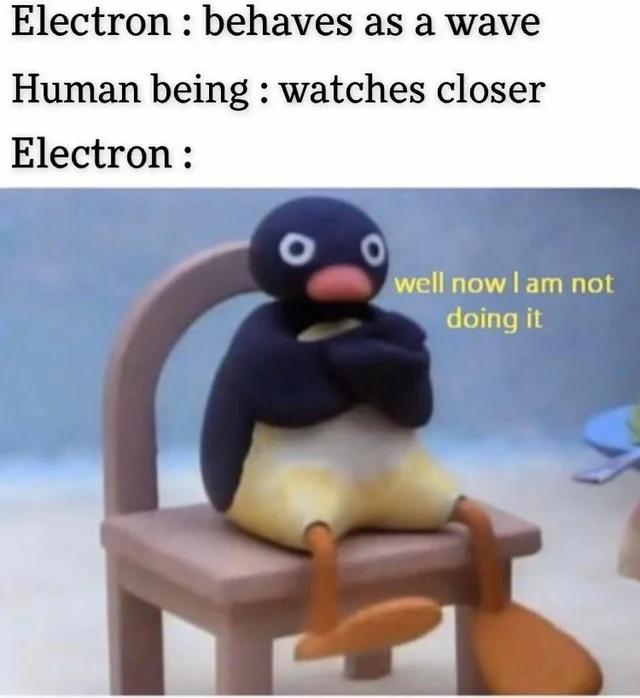this post was submitted on 19 Mar 2024
1370 points (98.9% liked)
Science Memes
11670 readers
2122 users here now
Welcome to c/science_memes @ Mander.xyz!
A place for majestic STEMLORD peacocking, as well as memes about the realities of working in a lab.

Rules
- Don't throw mud. Behave like an intellectual and remember the human.
- Keep it rooted (on topic).
- No spam.
- Infographics welcome, get schooled.
This is a science community. We use the Dawkins definition of meme.
Research Committee
Other Mander Communities
Science and Research
Biology and Life Sciences
- [email protected]
- [email protected]
- [email protected]
- [email protected]
- [email protected]
- [email protected]
- [email protected]
- [email protected]
- [email protected]
- [email protected]
- [email protected]
- [email protected]
- [email protected]
- [email protected]
- [email protected]
- [email protected]
- [email protected]
- [email protected]
- [email protected]
- [email protected]
- [email protected]
- [email protected]
- [email protected]
- [email protected]
- !reptiles and [email protected]
Physical Sciences
- [email protected]
- [email protected]
- [email protected]
- [email protected]
- [email protected]
- [email protected]
- [email protected]
- [email protected]
- [email protected]
Humanities and Social Sciences
Practical and Applied Sciences
- !exercise-and [email protected]
- [email protected]
- !self [email protected]
- [email protected]
- [email protected]
- [email protected]
Memes
Miscellaneous
founded 2 years ago
MODERATORS
you are viewing a single comment's thread
view the rest of the comments
view the rest of the comments

The interference disappearing from measurement is not really because the instrument alters the state. Or, at least, putting it like that occludes the more fundamental reason.
Fundamentally, measurements are subject to the uncertainty principle, which dictates that one can not define precisely the values of two complementary observables at the same time. Position and momentum of any quantum object are such complementary observables, so measuring one -- for example position -- requires that the other (momentum) becomes less defined.
When the position of a particle is narrowed down to a pixel on a detector screen, its momentum becomes very uncertain and we must talk about all the possible paths for it to have arrived at that point.
The probability of a particle being measured at any given pixel is given by the probability of all possible paths combined[^1], with this important quirk: when combining possible quantum states, they interfere with each other, constructively or destructively. Repeated measurements of positions give you what appears to be wave-like interference due to the way the probabilities of all paths interfere.
By checking which slit a particle passes through, you exclude all the possible paths through the other slit and end up not observing the same pattern because the two slits simply do not interfere.
[^1]: To be more precise, by "combining" I mean state vector addition. Probability is magnitude squared of a quantum state vector. So for a given position, you take all possible paths there, sum their state vectors, then square the resulting vector's norm (magnitude) to get its probability. The sum of all positions' individual probabilities will be exactly one - meaning that it will always be somewhere.